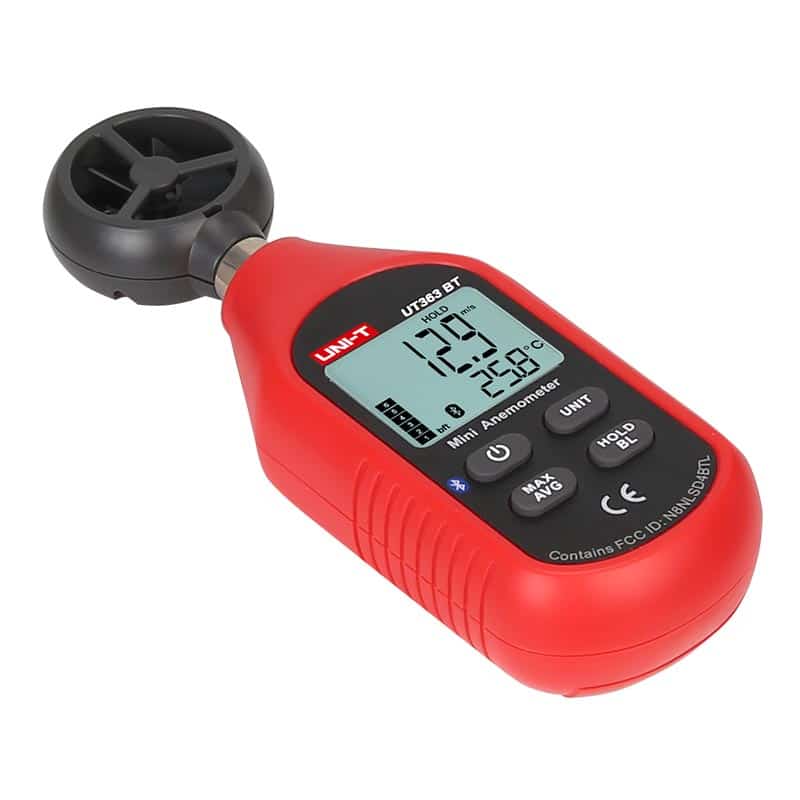How to Preserve and Look After Your Anemometer to Guarantee Durability
How to Preserve and Look After Your Anemometer to Guarantee Durability
Blog Article
All You Need to Know Concerning Anemometers: Exactly How They Function, Why They Matter, and Where to Make use of Them
Anemometers, however commonly overlooked in the world of clinical tools, play a critical function in various fields, supplying useful insights right into wind speed and airflow patterns. As we dig into the ins and outs of anemometer modern technology, we will uncover the internal functions of these tools, their relevance, and the essential considerations when choosing the appropriate anemometer for details applications.

Anemometer Basics
An important tool used to gauge wind rate and direction, the anemometer plays a crucial role in weather forecasting and various industries. An anemometer normally contains 3 or four mugs that turn in the wind, a vane that directs into the wind, and sensing units to track the movements or turnings. By computing the turnings or activities over a certain time duration, the anemometer can determine wind rate. The vane assists figure out wind direction by pointing right into the wind, giving beneficial data for weather condition projecting, aviation, maritime operations, environmental tracking, and wind power applications.
There are different types of anemometers readily available, consisting of mug anemometers, vane anemometers, hot-wire anemometers, and sonic anemometers, each with its distinct features and applications. Cup anemometers are typically used for fundamental wind speed measurements, while vane anemometers are liked for directional measurements. Hot-wire anemometers appropriate for low airspeeds, and sonic anemometers are perfect for high-precision measurements in study and industrial setups. Understanding the essentials of anemometers is crucial for exact wind information collection and analysis across various markets.
Concepts of Anemometer Operation
Building on the foundational understanding of anemometer essentials, the principles of anemometer procedure illuminate the mechanics behind wind rate and instructions dimensions. Anemometers run on the principle of airflow affecting a sensing unit, causing it to turn. Cup anemometers, for example, have three or more mugs that capture the wind, causing them to rotate much faster as the wind speed increases. The rotation speed is after that exchanged a wind speed measurement. Vane anemometers, on the various other hand, make use of a tail or a probe that straightens itself with the wind direction, supplying a dimension of wind instructions based upon the positioning of the sensing unit. Hot-wire anemometers count on a heated cord that cools off as wind passes over it, with the rate of cooling down establishing the wind speed. Ultrasonic anemometers measure wind rate and direction by analyzing the time it takes for ultrasonic signals to take a trip between transducers. Recognizing these concepts is crucial for precise and reliable wind measurements in various applications.
Significance of Anemometers
The importance of anemometers in weather forecasting and different markets can not be overemphasized. Anemometers play a critical duty in go determining wind speed and instructions, offering vital information for weather forecasting, environment researches, environmental tracking, and air travel procedures. Meteorologists count on anemometers to collect accurate wind data, helping them recognize weather patterns, anticipate tornados, and issue prompt warnings to the public. In markets such as construction, agriculture, renewable resource, and maritime operations, anemometers are made use of to maximize procedures, make certain safety, and raise effectiveness. Wind farm drivers utilize anemometers to assess wind problems and take full advantage of electricity manufacturing from wind turbines. In the maritime sector, anemometers help ship navigating by providing real-time wind info to captains, aiding them make notified decisions to ensure secure voyages. In general, anemometers are vital devices that contribute substantially to safety, effectiveness, and informed decision-making in weather forecasting and a variety of industries.
Applications Across Various Industries
In the sustainable energy industry, anemometers play an important role in examining wind problems for wind farm placements, making certain optimal power production. Industries like construction and mining utilize anemometers to keep an eye on wind speeds, crucial for safety protocols, especially official source when working at elevations or in open-pit mines where strong winds can posture dangers. In agriculture, anemometers aid farmers in handling crop splashing by offering real-time information on wind speed to stay clear of drift.

Choosing the Right Anemometer for Your Demands
For basic functions, a mug anemometer is suitable for gauging wind speed, while a vane anemometer gives wind instructions information. Hot-wire anemometers are suitable for reduced airspeed measurements, and ultrasonic anemometers provide high precision and toughness.

Verdict
In verdict, anemometers play a vital function in measuring wind speed and instructions across various markets. It is crucial to think about the value of anemometers in order to make educated decisions when picking the most suitable tool for measuring wind conditions.
There are numerous types of anemometers available, consisting of mug anemometers, vane anemometers, hot-wire anemometers, and sonic anemometers, each with its special features and applications. Mug anemometers are frequently utilized for fundamental wind rate dimensions, while vane anemometers are chosen for directional measurements. Hot-wire anemometers are appropriate for low airspeeds, and sonic anemometers are ideal for high-precision measurements in research study and commercial setups.Structure on the fundamental understanding of anemometer basics, the concepts of anemometer procedure clarify the mechanics behind wind speed and instructions measurements. For basic purposes, a cup anemometer is suitable see for measuring wind speed, while a vane anemometer gives wind instructions information.
Report this page